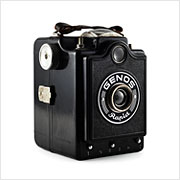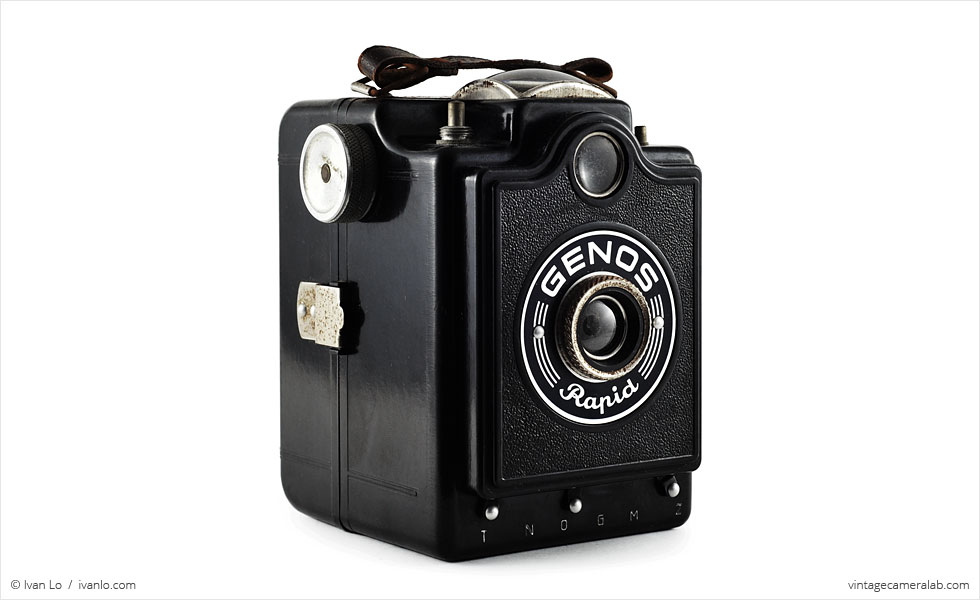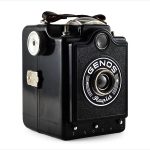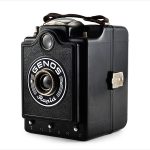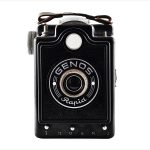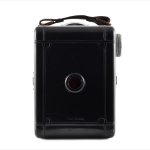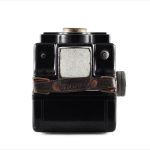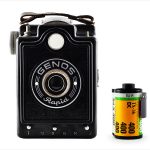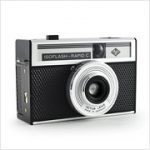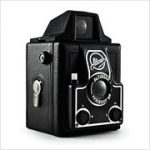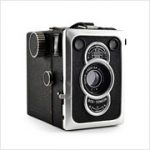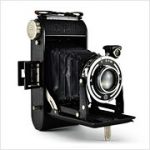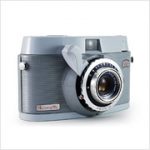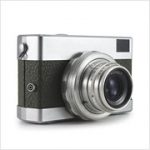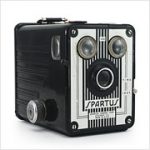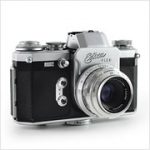Genos Rapid Specifications
| Manufacturer: | Genos Kamerabau |
| Origin: | West Germany |
| (modern day Germany) | |
| Made in: | West Germany |
| (modern day Germany) | |
| Introduced: | 1950 |
| Type: | Box, Viewfinder |
| Format: | 120 Film |
| Dimensions: | 7.8 x 11 x 9.8 cm |
Genos Rapid Overview
The Genos Rapid is a German box camera introduced in 1950 by Genos and made of Bakelite, an early plastic. Based in the Bavarian city of Nuremberg, the company was originally known as Norisan Apparatebau but after Germany was defeated in World War II (and the famous Nuremberg Trials had taken place), they decided to change their name to Genos Kamerabau.
Although at first glance, the Rapid appears to be just another no-frills box camera, it features a surprising number of features. The shutter button, located on the user’s right hand side of the pleasantly bright viewfinder, has threading for some sort of remote release cable, and is balanced by a flash sync socket located on the other side of the camera. On the bottom of the front plate are three switches. Although I’m not entirely sure what the letters stand for (something in German), flipping the “T” or “N” switch allows you to choose between two aperture settings (“T” is approximately f/16 while “N” is roughly f/8). Toggling the middle switch from “O” to “G” (which may stand for Gelb, the German word for “yellow”) activates a built-in yellow filter. The last switch controls the shutter speed: “M” (Moment) for a fixed shutter speed of approximately 1/60 seconds and “Z” (Zeit, the German word for “time”) puts the shutter in Bulb mode.
In terms of looks, the Genos Rapid is one of the most beautiful box cameras in my collection. I love the graceful, vaguely architectural curves, and the thoughtful, almost ergonomic layout of the controls. I bought this particular Rapid from a man who tears down houses for a living. He had rescued a dozen or so old cameras from various houses before demolition and was trying to sell them off. They were all in terrible condition with the exception of this Genos Rapid which, apart from some rust, a cracked leather strap, a loose yellow filter, and some scratches, was in pretty good nick. The seller had left work to show me his cameras and was being very courteous despite hearing that they were essentially worthless so I bought the Rapid off him for a very generous $20. After all, I had driven some 45 minutes out of the city to a really creepy small town to see them and I wasn’t about to go home empty-handed.
Find your very own Genos Rapid on eBay.
McKeown, James M. and Joan C. McKeown’s Price Guide to Antique and Classic Cameras, 2001-2002. (Grantsburg, WI, USA: Centennial Photo Service, 2001), p 243.
